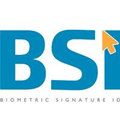Your Kids Data Hacked: 45 Million Students and Teachers Records Exposed
The PowerSchool data breach, which occurred in late December 2024, involved the unauthorized access to sensitive information belonging to millions of students and teachers across the United States.
What Happened:
- Compromised Credentials: The breach exploited a vulnerability in the PowerSchool SIS (Student Information System) platform, specifically through the “PowerSource” customer support portal.
- Data Theft: Some reports say cybercriminals gained access to the system using stolen credentials, enabling them to extract significant amounts of data.
- Data Impacted: The stolen data included a range of sensitive information, such as:
- Student Information: Names, addresses, dates of birth, Social Security numbers, medical records, grades, and even disciplinary records.
- Teacher Information: Names, addresses, contact information, and potentially other personal details.
How it Happened:
- Vulnerability Exploitation: Other reports say the attackers likely exploited a security flaw in the PowerSource portal, potentially through a phishing attack or by obtaining legitimate credentials through other means.
- Insufficient Security Measures: The breach highlights potential weaknesses in security infrastructure, such as inadequate password protection, insufficient monitoring, or lack of robust intrusion detection systems.
Impact on Personal Security:
- Identity Theft: The exposure of Social Security numbers and other personal information significantly increases the risk of identity theft for both students and teachers.
- This could lead to financial fraud, such as the opening of fraudulent accounts including credit cards.
- Data Misuse: The stolen data could be used for various malicious purposes, including:
- Targeted Phishing Attacks: Cybercriminals could use the information to launch highly targeted phishing attacks, increasing the likelihood of successful social engineering attempts.
- Black Market Trade: The stolen data could be sold on the dark web, where it can be used by other criminals for various illicit activities.
- Privacy Violations: The breach represents a serious violation of privacy for students, teachers, and their families.
- This can erode trust in educational institutions and technology providers.
- Psychological Impact: The data breach can cause significant anxiety and distress for individuals affected, particularly those whose sensitive personal information has been compromised.
Addressing the Impact:
- Monitoring Credit Reports: Individuals affected by the breach should closely monitor their credit reports for any suspicious activity and consider placing a fraud alert or credit freeze.
- Strong Passwords and Multi-Factor Authentication: Implementing strong, unique passwords and enabling multi-factor authentication on all online accounts is crucial to mitigate the risk of further compromise.
- Be Vigilant for Phishing Attempts: Individuals should be highly vigilant for any suspicious emails, phone calls, or text messages, especially those that appear to be from legitimate sources.
- Educate Yourself on Cybersecurity Best Practices: Understanding basic cybersecurity principles and best practices can help individuals protect themselves from online threats.
Freeze you and your child’s credit now.
There are two ways to go about freezing your child’s credit. One is free, but it takes a lot of time, and the credit bureaus are very difficult to work with, and the second is fee-based, but it’s a lot less time and you have advocates working for you to make sure the credit freeze sticks. Read on.
Freezing a child’s credit prevents anyone from opening new accounts in their name. Here’s how:
- Contact Credit Bureaus:
- You must contact each of the major credit bureaus: Equifax, Experian, and TransUnion.
- Each bureau has its own process, often with online options and phone numbers. But don’t expect anyone to answer the phone.
- Provide Necessary Information:
- You’ll need your child’s Social Security number, date of birth, and your own identifying information to verify your relationship.
- You may also need to provide proof of address. Birth certificates, etc.
- Place the Freeze:
- Each bureau will have a specific process, usually involving completing a form or making a phone call and sending in a ton of documentation.
- Obtain PINs:
- Each bureau will assign a unique PIN or password.
- You’ll need this PIN to temporarily lift the freeze if necessary (for example, to apply for a loan for college).
Important Notes:
- Early Action: It’s best to freeze your child’s credit early on, even if they are very young.
- Regular Monitoring: Regularly check your child’s credit reports for any unauthorized activity. And there shouldn’t even be a credit report, unless their identity was stolen.
- Consider a Credit Monitoring Service: These services can alert you to any suspicious activity on your child’s credit report.
Freezing your child’s credit is a proactive step to protect them from identity theft and potential financial harm.
I strongly recommend visiting the websites of the major credit bureaus (Equifax, Experian, and TransUnion) or contacting them directly for the most up-to-date and accurate information on freezing a child’s credit. Or… see below.
Here’s another way to go about it and it’s not all that expensive and much more efficient: CreditParent (a company I have a stake in) helps parents freeze your child’s credit to prevent unauthorized accounts from being opened in their name.
Here’s the process for freezing your child’s credit with CreditParent:
- CreditParent shows you how to gather your Childs information: You’ll provide details about your child and all the necessary documentation the credit bureaus need.
- Via a secure and encrypted portal, CreditParent submits freeze requests on your behalf to all three major credit bureaus: Equifax, Experian, and TransUnion.
- CreditParent then works with you to follow up with the credit bureaus to make sure that your child’s credit freeze has been established. Otherwise, the credit bureaus, sometimes just let your information sit there in a pile and do nothing with it. The credit bureaus aren’t efficient, at all.
Here is me discussing the topic on Fox Boston:
The PowerSchool data breach serves as a stark reminder of the critical importance of robust cybersecurity measures in protecting sensitive personal information. It underscores the need for continuous vigilance and proactive measures to safeguard individuals from the growing threat of cyberattacks.


























